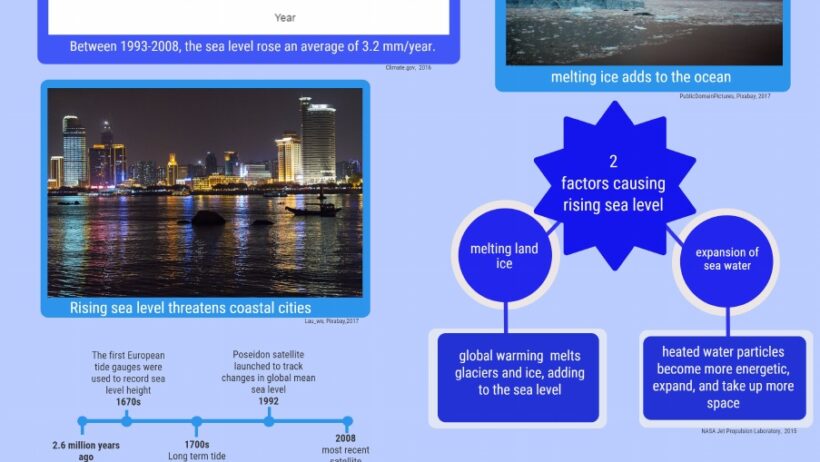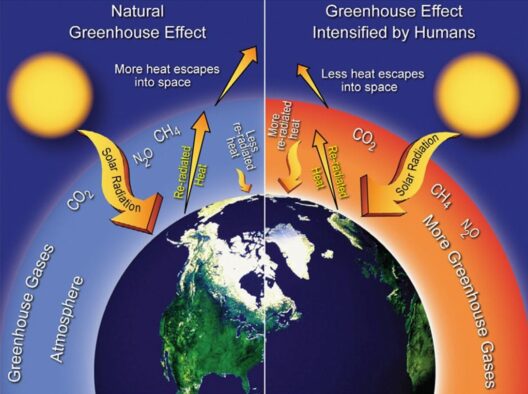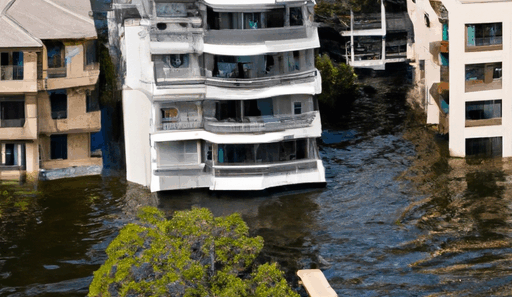Sea level rise has emerged as a critical indicator of climate change, capturing global attention due to its profound implications for ecosystems, human settlements, and overall planetary health. As coastal communities grapple with the impending threat of inundation, the inquiry into the current trends in ocean-level increase has become more pressing than ever. Are sea levels still rising? The answer is a resounding yes, and understanding the nuances behind this phenomenon can illuminate the complexities of our planet’s climate system.
To appreciate the ongoing changes in sea levels, it is essential to first consider the various contributing factors. The Earth’s sea levels are not merely a reflection of water volume; they are influenced by a confluence of atmospheric and geological processes. Two primary mechanisms drive the ongoing rise of sea levels: thermal expansion of seawater and the melting of glaciers and ice sheets.
Thermal expansion occurs as ocean water warms, leading to an increase in its volume. With global average temperatures steadily climbing due to greenhouse gas emissions, the oceans absorb a significant amount of this excess heat. This warming has been particularly pronounced in recent decades, resulting in an observable increase in sea levels. Studies indicate that over half of the observed sea-level rise is attributable to this thermal expansion, which underscores the intricate linkage between temperature and ocean levels.
Meanwhile, the melting of ice—predominantly from the vast Antarctic and Greenland ice sheets—has emerged as a crucial driver of sea level rise. As global temperatures increase, these ice reserves begin to disintegrate more rapidly than before, releasing freshwater into the sea. This process is not uniform; regions such as West Antarctica have shown alarming rates of ice loss, contributing unequivocally to rising oceans. Furthermore, the intermittent calving of glaciers, where sections break off and contribute directly to sea levels, adds a level of uncertainty regarding future predictions.
The current rates of sea level rise are alarming. Satellite observations reveal that global sea levels have been rising at an average rate of approximately 3.3 millimeters per year since the early 1990s. This figure, however, is not static; recent data suggests an acceleration in this trend, particularly in the last two decades. The implications of such a scenario are profoundly significant, especially for densely populated coastal areas that are ill-prepared for even modest increases in sea levels.
The socio-economic ramifications of rising sea levels are inextricably linked to exposure and vulnerability. Coastal cities like Miami, New Orleans, and Bangkok face the dual threats of chronic flooding and storm surges exacerbated by rising oceans. Major infrastructure and real estate investments are at risk, leading to potential loss of property, displacement of communities, and costly damages from extreme weather events. Such transformational changes call for innovative solutions, ranging from improved urban planning to the implementation of green infrastructure to mitigate the impact.
Yet, while rising sea levels pose significant challenges, they also serve as a clarion call for proactive engagement with climate science and adaptation strategies. Governments and organizations across the globe are beginning to recognize the necessity of investing in resilient infrastructures, flood defenses, and effective land-use policies. Adaptive strategies are being explored that encompass both hard engineering solutions, such as sea walls, and softer approaches, including restoring wetlands and mangroves that naturally buffer coastlines from encroaching waters.
It is crucial to remain vigilant in monitoring and understanding the myriad drivers of sea level rise. The interplay between natural processes and anthropogenic influences complicates the narrative, revealing a deeper tapestry of ecological interdependencies. As we look to the future, enhanced climate models will provide clearer prognoses and empower policymakers to make informed decisions about coastal management and risk reduction.
The fascination with sea level rise extends beyond mere statistics or data points; it invites a deeper contemplation of humanity’s relationship with the environment. Ocean levels are a poignant symbol of climate change—a direct manifestation of the complex interplay between human activity and the Earth’s systems. As such, they encapsulate a call for awareness, urging individuals and communities to advocate for sustainable practices aimed at reducing carbon footprints and enhancing environmental stewardship.
In conclusion, the question of whether sea levels are still rising is affirmative, grounded in a robust scientific understanding of climate dynamics. As the Earth continues to warm and glaciers recede, the reality of rising seas serves as both a challenge and an imperative. Embracing adaptive strategies, engaging with scientific inquiry, and fostering community resilience will be critical in navigating this tumultuous yet transformative phase for our planet. Significant collective action is not only necessary for mitigating impacts but also essential for ensuring that future generations inherit a resilient coastlines amidst inevitable change.
The journey ahead demands a unified commitment to preserving the integrity of our coastal ecosystems while fortifying our communities against the rising tides. By embracing this challenge, society can work towards a sustainable and equitable future in the face of looming environmental shifts.








